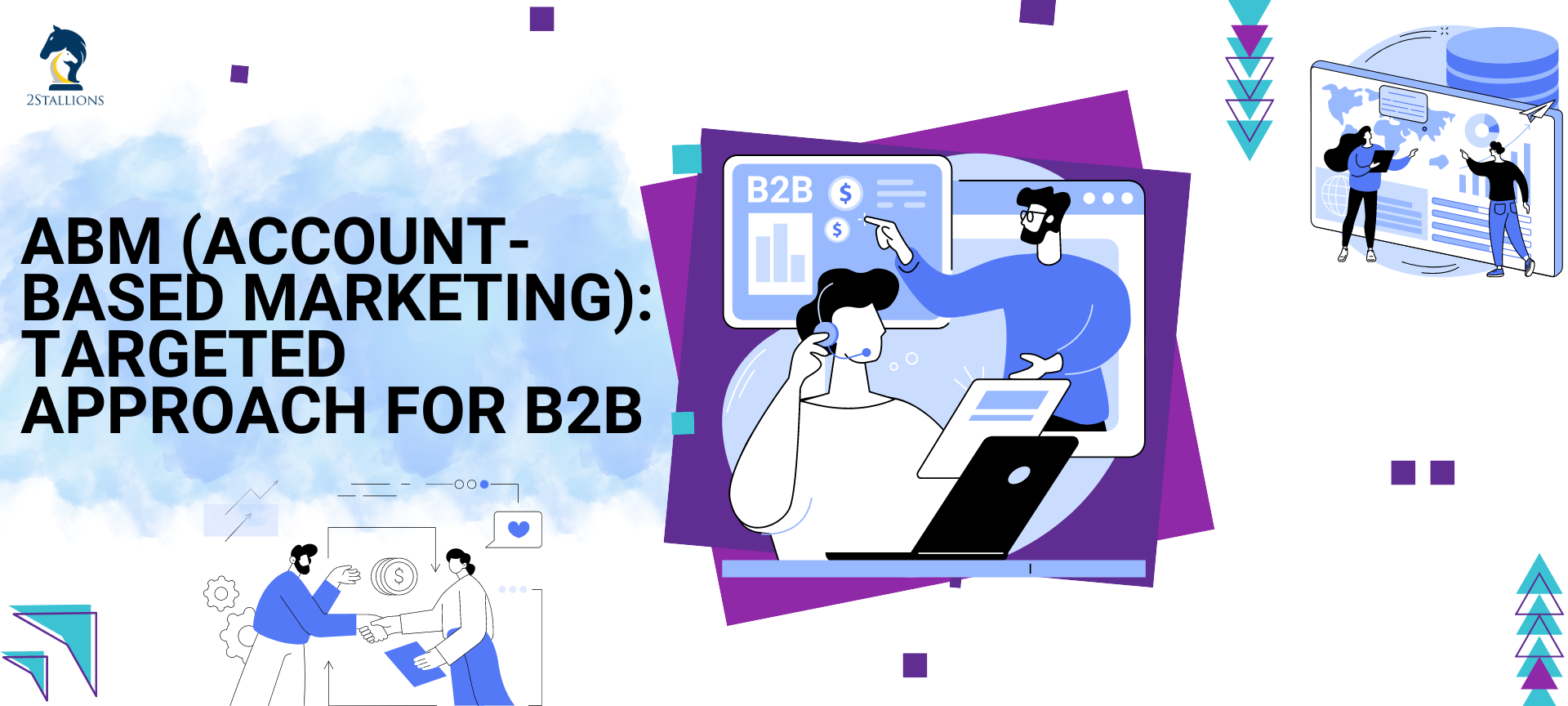SHARE

Account-Based Marketing (ABM) is a strategic approach to business marketing in which an organisation considers and communicates with individual prospects or customer accounts as markets of one. ABM is typically employed in enterprise-level sales organisations and is a key component of an effective digital marketing strategy.
ABM stands in contrast to traditional, broad-reach marketing strategies, where a company might engage with a large number of prospects and move them through a sales funnel. The marketer identifies key accounts ahead of time and then tailors a customised marketing strategy to each account.
Understanding Account-Based Marketing
ABM is not a new concept, but it has gained significant attention in the digital age, where personalised marketing campaigns can be delivered at scale. The concept is simple: instead of casting a wide net with their marketing efforts, companies using ABM treat individual accounts as a market in their own right.
By focusing on a limited set of target accounts, businesses can create highly personalised campaigns that speak directly to the needs and pain points of individual prospects. This approach not only increases the relevancy of the marketing message but can also improve the overall customer experience.
Components of ABM
ABM consists of several key components:
- Clear understanding of the target accounts, the business model, key decision-makers, and business needs. Information are gathered through a combination of internal data, third-party data, and direct engagement with the account.
- Creation of a tailored marketing strategy for each target account. Inclusive of the business needs, the products or services the company provides to meet those needs, and the best way to communicate the value proposition of the account.
Benefits of ABM
ABM offers several benefits over traditional marketing approaches. Because it focuses on individual accounts, it allows companies to deliver highly personalised marketing messages. This can increase engagement, improve customer satisfaction, and ultimately drive higher conversion rates.
Additionally, because ABM requires a deep understanding of the target accounts, it can help companies develop more effective sales strategies. By understanding the needs and pain points of their target accounts, companies can tailor their sales pitches to address these issues directly, increasing their chances of closing the deal.
ABM in Digital Marketing
In the context of digital marketing, ABM can be particularly effective. Digital platforms allow for a high degree of personalisation and targeting, making it easier for companies to deliver tailored marketing messages to individual accounts.
Moreover, digital platforms provide a wealth of data that can be used to better understand target accounts. This data can be used to refine marketing strategies, identify new target accounts, and monitor the effectiveness of ABM campaigns.
Tools for ABM in Digital Marketing
There are several tools available that can support ABM in a digital marketing context:
|
Tools |
Services |
| Customer Relationship Management (CRM) systems | Help companies manage their interactions with individual accounts |
| Marketing Automation Platforms | Automate the delivery of personalised marketing messages |
| Analytics tools | Provide insights on the effectiveness of ABM campaigns |
Additionally, many digital platforms offer targeting options that can support ABM. For example, social media platforms like LinkedIn allow companies to target their advertising to specific companies or job titles, making it easier to reach the decision-makers at target accounts.
Challenges of ABM in Digital Marketing
While ABM can be highly effective, it also presents several challenges. One of the biggest is the need for alignment between marketing and sales. Because ABM involves targeting specific accounts, it requires a high degree of collaboration between these two teams to ensure that the right accounts are being targeted and that the marketing messages are aligned with the sales strategy.
Another challenge is the need for high-quality data. To effectively target individual accounts, companies need accurate and up-to-date information about these accounts. However, gathering and maintaining this data can be a significant challenge.
Best Practices for ABM
Despite these challenges, several best practices can help companies succeed with ABM. One of the most important is to start with a small number of target accounts. This allows companies to test and refine their ABM strategies before rolling them out on a larger scale.
Another best practice is to involve all relevant stakeholders in the ABM process. This includes not only marketing and sales, but also customer service, product development, and other teams that interact with the target accounts. By involving these teams, companies can ensure that their ABM strategies are aligned with their overall business objectives.
Measuring Success in ABM
Like any marketing strategy, the success of ABM should be measured and evaluated. However, because ABM focuses on individual accounts, traditional marketing metrics like click-through rates or conversion rates may not be sufficient. Instead, companies may need to look at account-specific metrics, like the number of engaged contacts at a target account, or the amount of revenue generated from a target account.
Additionally, because ABM is a long-term strategy, it may take time to see results. Companies should be prepared to invest in ABM for the long haul and adjust their strategies as needed based on the results they see.
Future of ABM
As digital marketing continues to evolve, so will ABM. Advances in technology, like artificial intelligence and machine learning, are likely to make ABM even more effective by allowing companies to better predict which accounts are most likely to convert and to deliver even more personalised marketing messages.
At the same time, the increasing importance of customer experience in marketing means that ABM is likely to become even more important. By focusing on individual accounts and delivering personalised marketing messages, companies can improve the customer experience and build stronger relationships with their customers.
Conclusion
ABM is a powerful tool in the digital marketer’s toolkit. By focusing on individual accounts and delivering personalised marketing messages, companies can improve engagement, increase conversion rates, and build stronger relationships with their customers.
Although ABM presents several challenges, including the need for alignment between marketing and sales as well as the need for high-quality data, these can be overcome by careful planning of the execution. Companies can reap the benefits of ABM and drive their business forward by following best practices and measuring the success.
ABM & B2B FAQs
What is Account-Based Marketing (ABM)?
Account-Based Marketing (ABM) is a strategic approach on guiding high-value accounts through the sales funnel via tailored interaction in B2B marketing. The marketing and sales teams collaborate to create personalised buying experiences for a targeted set of accounts.
Why is ABM considered effective for B2B companies?
ABM is effective because it allows companies to align marketing and sales efforts directly with the revenue goals by focusing resources on a subset of accounts that have high revenue potential. It increases efficiency and effectiveness by personalising the marketing message based on specific needs and characteristics of each account.
How do you identify and select target accounts for ABM?
Identifying alongside selecting target accounts for ABM involves analysing existing customer data to find high-value clients, looking for potential accounts resembling the clients, factoring in market influence, potential revenue, and likelihood of conversion. Tools like CRM systems and predictive analytics are used to aid this process.
What are some key strategies to implement ABM successfully?
Key strategies for successful ABM include understanding target account needs, customising content to address specific needs, utilising multi-channel engagement strategies, measuring as well as optimising strategies based on feedback and performance metrics.











